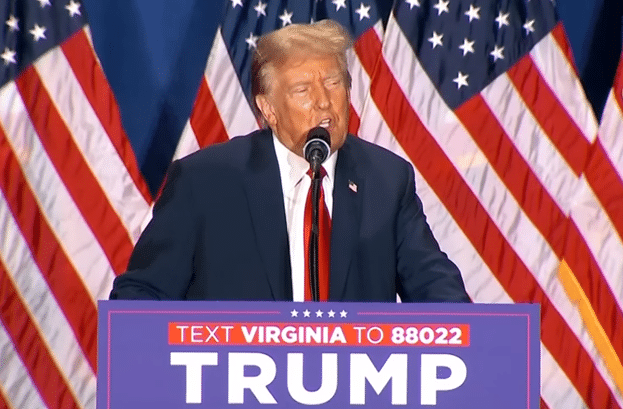
President Donald Trump flipped all seven battleground states last week, securing not only the Electoral College but the popular vote for the first time for a GOP candidate in 20 years, and to do so he made inroads in deep blue states as well as battlegrounds.
At least four relatively blue states represent opportunities for conservatives in the next few election cycles, and they could become new battleground states with the right strategy.
New Jersey, not exactly known for being a place where Republicans stand a fighting chance, could become increasingly red if conservatives play their cards right. Trump lost New Jersey this year by six points, a clear victory for Harris.
However, when compared to the margin by which Biden won the state last cycle things look pretty bad for Democrats. Biden won New Jersey by 16 points four years ago, indicating the state has swung ten points toward the right since then.
Latinos appear to be large contributors to Trump’s gains in New Jersey, with President Trump winning a collection of districts in North Bergen, a region that is 70 percent Hispanic, as well as making gains in densely Hispanics cities. As the New Jersey Monitor reported recently, Trump beat Harris by six points in the city of Passaic, which is 73 percent Latino.
In the southwest, heavily blue New Mexico is showing signs of shifting toward the right, with President Donald Trump losing it by a mere six points this year, after losing it by eleven points in 2020.
A dense population of Native Americans appear to be contributing to Trump’s gains in New Mexico. In McKinley County, which is over 75 percent Native American, Trump lost the county by 25 points. However, he lost it to Biden by a full 39 points four years ago, indicating a fourteen-point shift toward Trump compared to 2020.
A relatively white state in the Northeast also swung fairly substantially right this year compared to recent elections. New Hampshire voted for Harris by just three percentage points, 51 percent to 48 percent this year. For comparison Biden won New Hampshire by 7.5 points in 2020, 53 percent to 45.5 percent.
It may be a bit premature to call Virginia a swing state again – the state has not voted for a Republican in a presidential election since George W. Bush won the state in 2004. That said, Virginia showed reduced enthusiasm for Harris compared to Biden four years ago, giving conservatives hope that the state may be shifting red again.
Harris beat Trump in Virginia by 5.2 points, 51.8 percent to 46.6 percent. However, Biden cleared the state by over ten points in 2020 – 54.4 percent to 44.2 percent. This represents a five-point shift toward Trump since 2020.
Virginia’s Loudoun County, a suburban county that includes a significant Asian American population, appears to be at least partially responsible for Democrat losses this election cycle. Although the blue county still went for Harris by sixteen points this year, Loudoun voted for Biden by 25 points four years ago, indicating a sharp nine-point dip for Democrats since 2020.
This shift toward the right was already palpable in the Virginia Governor’s race in 2021, when Gov. Glenn Youngkin won the governor’s race and turned out a significant number of Asian Americans in Loudoun and Fairfax counties.
These marginal shifts do not mean Republicans are going to be easily winning in these states anytime soon, but they do indicate interest among the people for change, and cracks in the Democrat machine.
Manzanita Miller is the senior political analyst at Americans for Limited Government Foundation.






